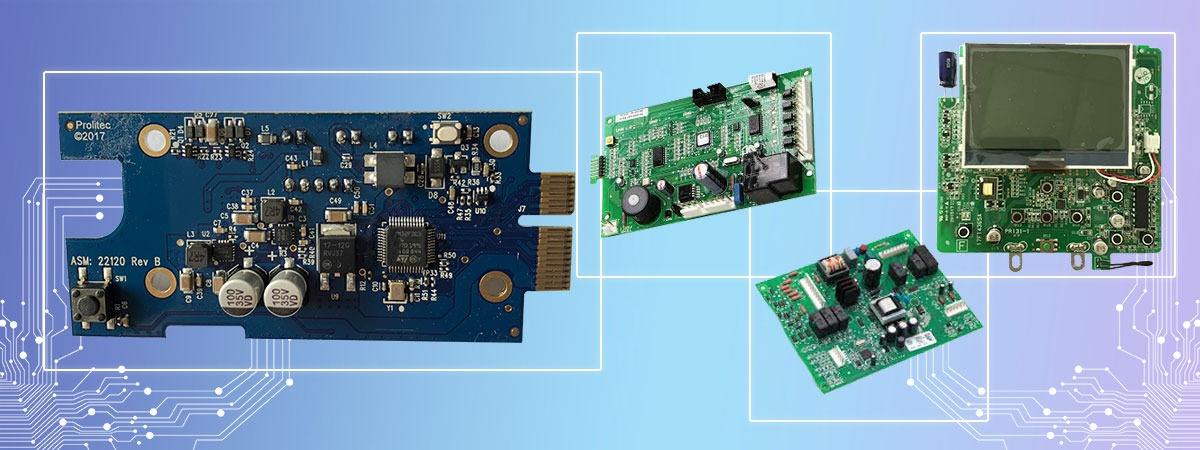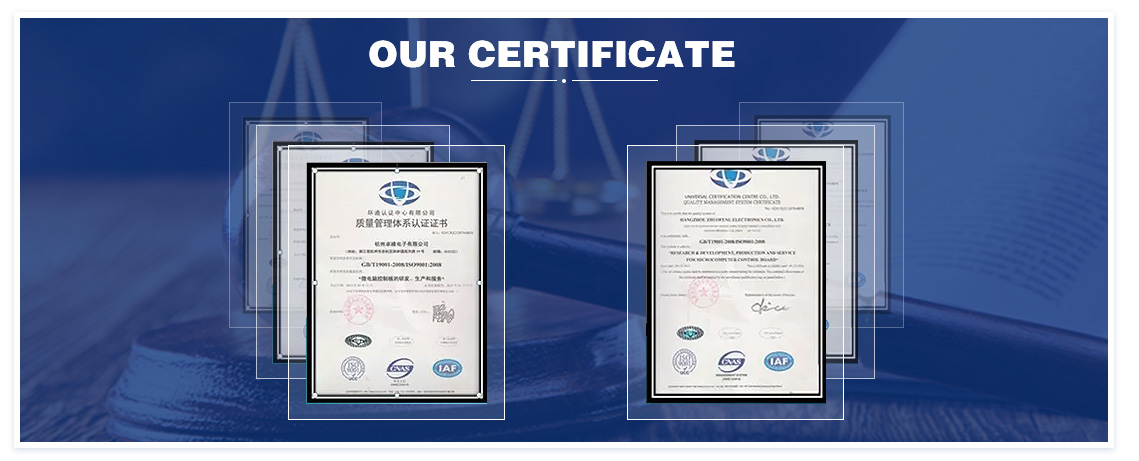Temperature controller program development
Temperature controller program development
1. Function description
1. Product Overview
This product is a dual-channel water temperature controller with three working modes (standby mode, normal working mode, alarm mode) including two temperature acquisition sensors, two 5000 watt heating control relay outputs, and a control panel (including 4 control Press the button, two-way three-group LED display, display the current temperature, open temperature and close temperature).
Under normal working conditions, the thermostat is powered on (~220V), the MCU starts to work, the thermostat is in standby mode, the relay turns off the output, and the current temperature display part displays the current water temperature. When the user presses the “switch” button, the thermostat enters the normal working mode, and the “open temperature” digital tube displays the set open temperature (the default open temperature is 28°C, and the close temperature is 32°C). When the temperature is low At 28°C, the thermostat relay is closed, the heating rod is energized to start heating, the water circulation motor starts to run, the corresponding "heating up" LED light is on (or flashing for 0.5s), when the temperature reaches the set "off temperature" , The thermostat relay is turned off, the heating rod is powered off to stop heating, the water circulation motor is turned off, and the corresponding "cooling" LED is on (or flashing for 0.5s), and repeat the operation to ensure that the water temperature is always controlled within the set range .
When in standby mode, the user presses the "Settings" button, and the thermostat enters the setting mode. At this time, the first group of "Turn on temperature" LED nixie tubes starts to flash, then the user can press the "+" and "- on the panel "Button to adjust (set) the "open temperature" of the first group. When the user adjusts it, or save the default, the user presses the "set" button again, and the system immediately saves the first group of "open temperature". One group of "open temperature" digital tubes return to normal display, and the second group of "open temperature" digital tubes start to flash, the user presses the "+" and "-" buttons on the panel to adjust (setting, temperature setting range -5 °C ~ 98°C) The second group of "open temperature", and so on, until the four temperature settings are completed.
Anhydrous protection
When the sensor detects that there is no water, the corresponding "current temperature" digital tube flashes for 0.5s to display the E2 error code, and the corresponding output is turned off until it returns to normal.
Leakage Protection
When the sensor detects the leakage, the corresponding "current temperature" digital tube flashes for 0.5s to display the E3 error code, so the output is turned off until it returns to normal.
Alarm mode
When the controller does not detect the temperature sensor/or the temperature sensor is abnormal, the relay is turned off, the heater is turned off and heating, the corresponding "current temperature" digital tube flashes "E1" for 0.5s, an error code, and the buzzer emits 0.5s The "di" sound. When the water temperature reaches 34°C, the corresponding "current temperature" digital tube flashes for 0.5s to display the current temperature, and the buzzer emits a 0.5s "di-di" sound.
Regarding the functions of "anhydrous alarm" and "leakage alarm", the current controller provided by the customer has not found the corresponding sensor, and the design can be modified and added if necessary.
Power down mode
When the device is powered off in the normal working mode, the control saves the current setting parameters. After power on again, the controller enters the standby mode. After the user presses the "switch" key, the thermostat starts to work (set the temperature to the last power off Data saved later).
Special Note
Two sets of wiring terminals for heating and water circulation are required to be changed to lead out, the sensor interface is changed to a more easily pluggable terminal, and two sets of water shortage and leakage detection sensors are added.


